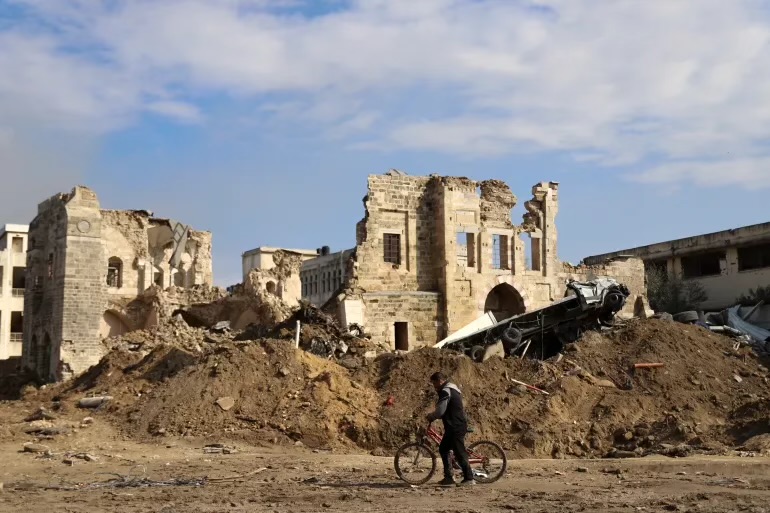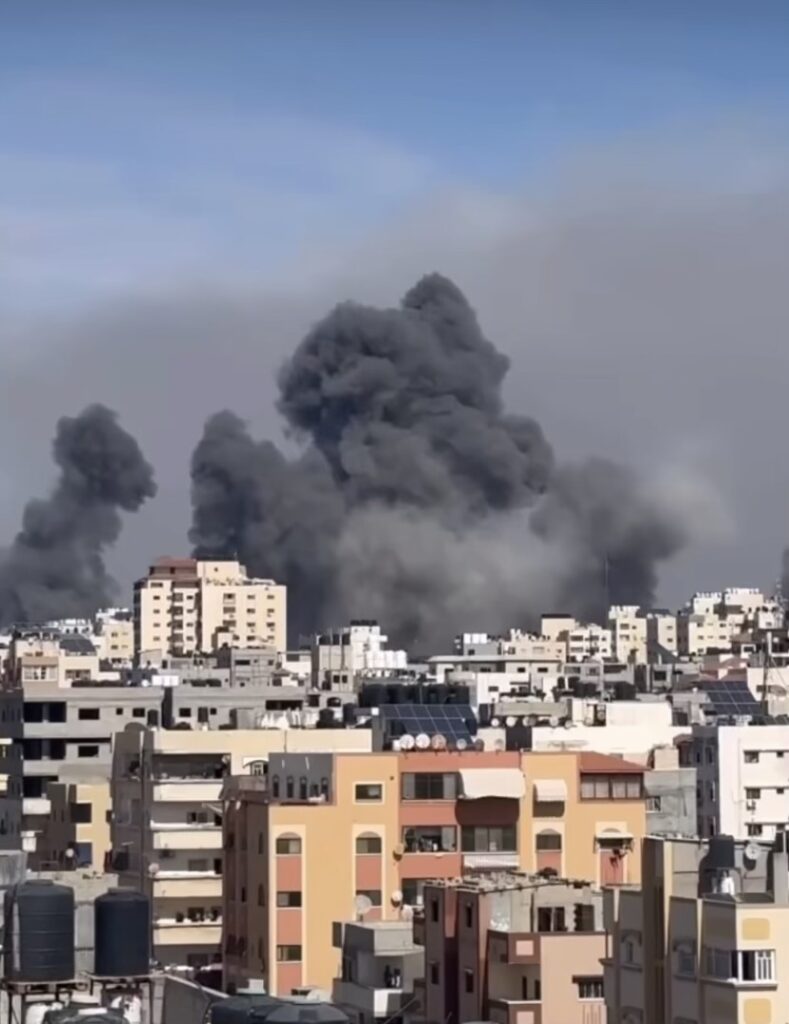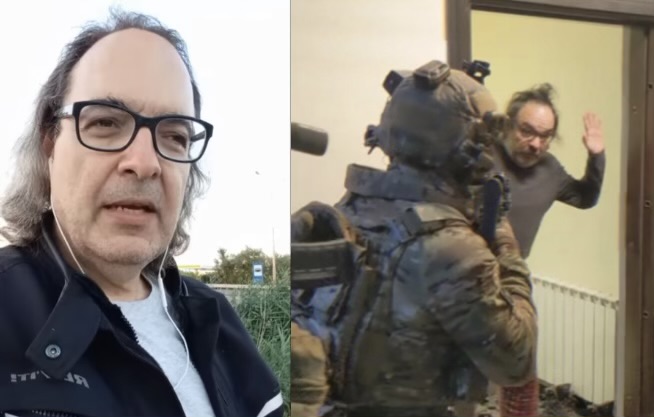Clouding the crisis in Gaza are political narratives and talking points, warring ideologies, propaganda campaigns, special interests, and the sharing of misinformation. Yet beneath all those, one of the worst humanitarian disasters in modern history exists. The small enclave is an effective concentration camp of horror and nightmares, unimaginable to those watching events unfold on their phones or television screens. However, calls for a ceasefire are still ignored or rebuked by politicians and hardliners, who see the humanitarian costs as a necessary consequence of their stated mission of eliminating Hamas.
With a length of 25 miles and a width of 7.5 miles at its widest, the Gaza Strip is home to 2.3 million people, making it one of the most densely populated places on earth. Over 80% of its inhabitants are refugees or descendants of refugees from the mass expulsion of Palestinians from their land in 1948, known as the Nakba, Arabic for “catastrophe.” The Gaza population has been under Israeli siege since 2007, leading to an existing poverty and food insecurity crisis across the strip. Previous to October 7th, 46% of Gazans were unemployed, 33% struggled with food insecurity, and 61% lived below the UN poverty line. Since 2007, Israel has prevented anyone from entering or leaving, with only a few exceptions. Violence and destruction are nothing new to Gaza’s citizens, whom Israel has killed in large numbers in military operations such as Operation Cast Lead, Operation Pillar of Defense, and Operation Protective Edge. But Israel’s bombardment and offensive actions since October 7th have caused scores of deaths on a level previously unseen.
After Hamas’s October 7th attack on Israel that killed 695 civilians and 373 soldiers, police, and security personnel, Israel began retaliatory strikes across the Gaza Strip. It increasingly became clear that nowhere was safe and any building could be a target. Israel conducted airstrikes on residential buildings, schools, hospitals, mosques, churches, United Nations facilities, media offices, refugee camps, and more. While the strikes often directly kill those in the target zone, they bury others beneath mountains of rubble. The number of men, women, and children buried alive under the debris is unknown, and they are only reported as missing. Video taken by Palestinian journalists such as Motaz Azaiza often shows Palestinian men rescuing whomever they can from under the remnants of homes and buildings in the aftermath of Israeli strikes.
In some cases, the victims of strikes die from their wounds hours later, unable to be transported to a hospital or receive proper medical care. One such example was Al Jazeera cameraman Samer Abudaqa, who was wounded along with his colleague Wael Al-Dahdouh in a drone strike on a school in Khan Younis. Paramedics were unable to reach him due to the heavy bombardment of the area, and Abudaqa bled out after 5 hours. Al-Dahdouh, who previously lost his family in an Israeli strike, survived his injuries and continues reporting on the ground in Gaza.
While airstrikes appear to be the primary cause of civilian casualties, deaths from Israeli sniper fire go quietly unnoticed. The most notable case was condemned by Pope Francis when two women were shot dead in a Palestinian church. The Pope denounced the killing of an 84-year-old woman and her daughter in a Catholic church as an act of “terrorism.” Israeli snipers have also targeted displaced people outside of Al-Quds Hospital, including children and pregnant women. As Israeli troops execute their offensive in Gaza, it becomes increasingly clear that the military’s policy is to “shoot first ask questions later.” Such a policy became evident when soldiers shot dead three Israeli hostages, bare-chested and waving a white flag. Israeli soldiers shot and killed the first two hostages immediately, and the third ran back into the building from which they emerged, yelling in Hebrew. Upon hearing the Hebrew, the battalion commander ordered the troops to cease fire. But when the wounded hostage reemerged from the building, he was shot dead regardless.
Increasing reports have emerged of executions of unarmed Palestinians in their homes and schools. The Euro-Med Human Rights Monitor has reported dozens of such cases in which Israeli soldiers unlawfully shot and killed Gazan men, women, and children. In many instances, survivors claim that Israel collects the cellphones of those who witness the executions. Accountability and investigations appear nothing but wishful thinking for the families of those executed, as many times before, Israel acts with total impunity.
The violence and destruction also caused the displacement of 1.9 million people, 85% of Gaza’s population. An estimated 46,000 homes have been destroyed, and 260,000 more damaged. Displaced Palestinians crowd into the remaining homes of relatives, schools, hospitals, and UN shelters. But many more in the southern cities sleep in tents or out in the cold. As Israel intensified its campaign in the North, it ordered 1.1 million civilians living in northern cities to evacuate southward, a task the United Nations called impossible. But the conditions in the South are far from safe, and intense fighting in the area of Khan Younis has pushed Palestinians even farther south to the border city of Rafah. More than 1 million people, nearly half of Gaza’s population, now reside in Rafah city, where food, medical supplies, and facilities are limited to nonexistent. Six hundred people share a single toilet, leading to highly concerning sanitary conditions. Combined with severe malnutrition and a collapse of the healthcare system, the risk of widespread illness and disease is an increasing threat.
The scarcity of food in Gaza means that no one is safe from the risk of malnutrition and starvation. The Euro-Med Human Rights Monitor estimates that 71% of Gazans face extreme hunger, and the United Nations says that 25% of the population is starving. Human Rights Watch accuses Israel of using starvation as “a weapon of war,” a war crime under international law. The meals Palestinians do receive often hardly qualify as meals, such as fried tomatoes or solely onions. Mothers and fathers are forced to choose to feed their children while they go hungry. Samia Abu Salah, a primary care doctor in Rafah, reports that patients are now coming to him emaciated, suffering from weight loss and anemia. Reports are beginning to arise of deaths by starvation. If current trends continue, Gaza will likely face a famine by early February.
The lack of nutrition coupled with unsanitary conditions carry the danger of weakening immune systems and laying the groundwork for disease and illness to sweep through Gaza’s population. The Gaza Health Ministry already reports rising cases of staph infections, chicken pox, rashes, urinary tract infections, meningitis, mumps, scabies, measles, and food poisoning. The World Health Organization also expressed concerns about respiratory infections, jaundice, and bloody diarrhea. The United Nations has reported 364 attacks on healthcare facilities in Gaza so far. Israeli forces have killed over 300 healthcare workers and are detaining 99 more. The few hospitals still operational function with minimal fuel and medical supplies.
A heavily Westernized perspective of the crisis, exacerbated by illegitimate media coverage, tends to paint Israel’s actions as retaliation that has gone too far or excessive collateral damage that has crossed some arbitrary line in the acceptability of the tragedy of war. However, an unbiased analysis of Israeli military tactics and the stated goals of Israeli officials reveal a much more catastrophic plan: the elimination of Gaza and its population to solve what has been one of Israel’s most nagging problems. Israeli Heritage Minister Amihai Eliyahu suggested dropping a nuclear bomb on the Gaza Strip, then later claiming his remarks were “metaphorical.” Another strategy brought forth by Former Deputy Prime Minister Eli Yishai was to “send Gaza back to the Middle Ages.” Former Diplomacy Minister Galit Atbaryan simply agreed on the need to “wipe Gaza from the face of the earth.” Such destructive rhetoric is interwoven with a supremacist and dehumanizing ideology that justifies mass extermination. In the words of Israeli politician Michael Ben-Ari, “There are no innocents in Gaza.” Supposed liberal centrist politician Meirav Ben-Ari remarked, “The children of Gaza have brought this upon themselves.” But it was Israeli Prime Minister Benjamin Netanyahu who called for genocide in the form of a Biblical reference: “You must remember what Amalek has done to you, says our Holy Bible. And we do remember.” In the Book of Samuel of the Old Testament, God commands King Saul to “attack the Amalekites and totally destroy all that belongs to them. Do not spare them; put to death men and women, children and infants, cattle and sheep, camels and donkeys.”
Netanyahu’s advocation for genocide, along with the words of the other officials and politicians previously mentioned, is based on a movement and idea known as Zionism, established in 1897 to create a Jewish state in the land of Palestine. While different variations of Zionism have brought forth differing ideas and thoughts, Israeli policy over the last 75 years has shown that Zionism is necessarily at the expense of the existing Palestinian population. Between the Nakba, illegal settlements in the West Bank, denial of the right to return for Palestinian refugees, and the siege and bombardment of Gaza, it is clear that Zionism denotes the ethnic cleansing of the Palestinian people.
According to the Gaza Ministry of Health, over 22,000 have been killed in the first three months of Israeli aggression, and other reports suggest the number is much higher. An estimated 10,000 infants and children have lost their lives. But there is a reason the Palestinians report their people as martyred, not killed. Each death fuels a growing resistance among Gaza’s young men, and for that reason, Israel’s method of crushing resistance only serves as redundant at the expense of the blood of innocents.



